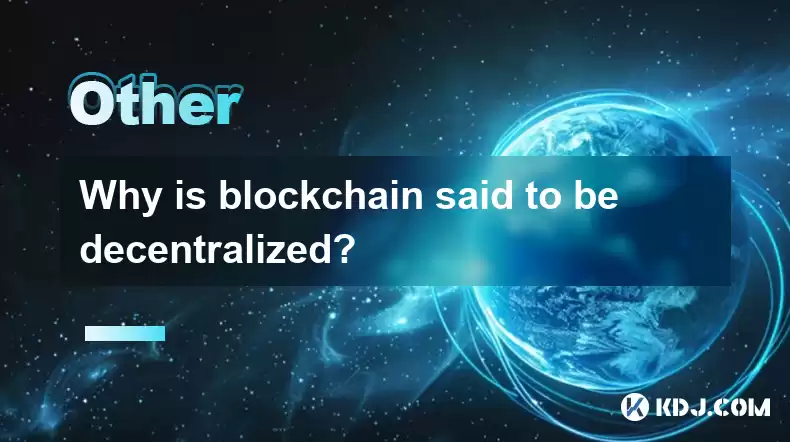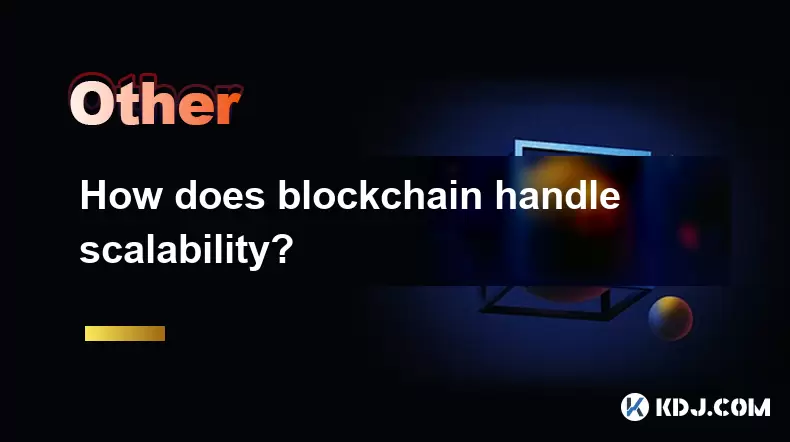-
 Bitcoin
Bitcoin $113800
0.32% -
 Ethereum
Ethereum $3477
-0.14% -
 XRP
XRP $2.873
-2.20% -
 Tether USDt
Tether USDt $0.9999
0.02% -
 BNB
BNB $749.3
-0.40% -
 Solana
Solana $161.7
-0.55% -
 USDC
USDC $0.9998
0.00% -
 TRON
TRON $0.3268
0.28% -
 Dogecoin
Dogecoin $0.1976
-0.03% -
 Cardano
Cardano $0.7250
2.27% -
 Hyperliquid
Hyperliquid $39.18
2.73% -
 Sui
Sui $3.457
1.70% -
 Stellar
Stellar $0.3832
1.16% -
 Chainlink
Chainlink $16.11
1.49% -
 Bitcoin Cash
Bitcoin Cash $539.7
1.25% -
 Hedera
Hedera $0.2410
2.21% -
 Ethena USDe
Ethena USDe $1.001
0.04% -
 Avalanche
Avalanche $21.35
0.21% -
 Toncoin
Toncoin $3.716
3.86% -
 Litecoin
Litecoin $109.3
2.88% -
 UNUS SED LEO
UNUS SED LEO $8.965
0.04% -
 Shiba Inu
Shiba Inu $0.00001214
1.02% -
 Polkadot
Polkadot $3.589
1.85% -
 Uniswap
Uniswap $9.083
1.24% -
 Monero
Monero $299.3
0.98% -
 Dai
Dai $1.000
0.02% -
 Bitget Token
Bitget Token $4.301
0.43% -
 Pepe
Pepe $0.00001045
1.32% -
 Cronos
Cronos $0.1314
0.51% -
 Aave
Aave $257.6
2.04%
Why is blockchain said to be decentralized?
Blockchain achieves decentralization through distributed ledgers, cryptographic hashing, and consensus mechanisms, enhancing security and resilience but posing scalability challenges.
Mar 28, 2025 at 11:56 am

Understanding Decentralization in Blockchain
The term "decentralized" is central to understanding blockchain technology. It contrasts sharply with traditional centralized systems like banks or online databases, which are controlled by a single entity. A decentralized system, like a blockchain, distributes control across a vast network of participants, making it inherently more resistant to single points of failure and censorship. This distribution of power is what makes blockchain truly revolutionary.
How Blockchain Achieves Decentralization
Blockchain achieves decentralization through several key mechanisms. Firstly, it utilizes a distributed ledger. Instead of a single database held by one entity, the blockchain's data is replicated across numerous computers (nodes) in a peer-to-peer network. This means that no single entity has complete control over the data. Any changes to the blockchain require consensus among a significant portion of these nodes.
Secondly, cryptographic hashing secures the blockchain. Each block of transactions is linked to the previous one using cryptographic hashes, creating an immutable chain. This makes altering past transactions incredibly difficult, requiring the manipulation of a significant portion of the network. The cryptographic nature also ensures the integrity and authenticity of the data.
Thirdly, consensus mechanisms are crucial. These are algorithms that determine how nodes agree on the validity of new transactions and add them to the blockchain. Popular examples include Proof-of-Work (PoW) and Proof-of-Stake (PoS). These mechanisms prevent any single entity from dominating the network and adding fraudulent transactions.
Dissecting the Decentralized Nature of Blockchain Networks
The decentralized nature of blockchain isn't absolute. While the goal is complete decentralization, the reality is often nuanced. Some blockchains are more decentralized than others, depending on factors like the distribution of nodes, the mining/staking power, and the governance model.
Network Participants: A truly decentralized blockchain has a large number of geographically dispersed nodes participating in the network. This prevents any single entity or group from controlling a majority of the network's computational power or influence.
Consensus Mechanisms: Different consensus mechanisms have varying levels of decentralization. Proof-of-Work, for instance, can be criticized for its energy consumption and tendency toward centralization due to the dominance of large mining pools. Proof-of-Stake aims to improve decentralization by rewarding participants based on their stake in the network, rather than their computational power.
Governance Models: The governance model determines how decisions about the blockchain's future are made. A decentralized governance model empowers the community, while a centralized one gives control to a select group or entity. This aspect significantly impacts the overall decentralization of the blockchain.
Data Availability: The accessibility of the blockchain data is another crucial factor. A decentralized blockchain should allow anyone to access and verify the data, contributing to transparency and trust.
The Implications of Decentralization in Cryptocurrencies
The decentralized nature of blockchain has profound implications for cryptocurrencies. It contributes to several key features:
- Transparency: All transactions are publicly recorded and verifiable on the blockchain.
- Security: The distributed nature and cryptographic security make it extremely difficult to tamper with the blockchain.
- Resilience: The network is resistant to single points of failure and censorship.
- Trustlessness: Participants don't need to trust each other or a central authority to conduct transactions.
However, decentralization is not without its challenges. It can lead to scalability issues, slower transaction speeds, and complexities in governance. The balance between decentralization, security, and scalability remains a significant area of research and development in the blockchain space.
Exploring Different Levels of Decentralization
It's important to understand that not all blockchains are equally decentralized. Some projects prioritize scalability over decentralization, leading to a more centralized architecture. Others strive for maximal decentralization, even if it means compromising on some performance aspects.
- Highly Decentralized: These blockchains have a vast number of nodes, diverse geographical distribution, and robust consensus mechanisms that resist centralization.
- Moderately Decentralized: These blockchains may have a smaller number of nodes or rely on consensus mechanisms that are more susceptible to influence from larger stakeholders.
- Centralized (or Semi-Centralized): These systems might have a smaller number of controlling nodes, giving a smaller group more power. While they may utilize blockchain technology, they don't embody the core principles of decentralization.
Understanding the degree of decentralization in a specific blockchain is vital for assessing its security, resilience, and overall suitability for various applications. This requires careful examination of its technical architecture, governance model, and community participation.
Frequently Asked Questions
Q: Is a completely decentralized blockchain possible?
A: While the ideal is complete decentralization, achieving it perfectly is challenging. Factors like network effects, technological limitations, and economic incentives can influence the level of decentralization.
Q: What are the benefits of a decentralized blockchain?
A: The key benefits include enhanced security, resilience to censorship and single points of failure, increased transparency, and trustlessness.
Q: What are the drawbacks of a decentralized blockchain?
A: Drawbacks can include scalability challenges, slower transaction speeds, and complexities in governance.
Q: How can I assess the level of decentralization of a blockchain?
A: Examine the number and distribution of nodes, the consensus mechanism used, the governance model, and the overall community involvement. Research the project's whitepaper and its active community participation.
Q: What is the difference between centralized and decentralized systems?
A: Centralized systems have a single point of control, while decentralized systems distribute control across multiple participants, making them more resilient and less susceptible to censorship.
Disclaimer:info@kdj.com
The information provided is not trading advice. kdj.com does not assume any responsibility for any investments made based on the information provided in this article. Cryptocurrencies are highly volatile and it is highly recommended that you invest with caution after thorough research!
If you believe that the content used on this website infringes your copyright, please contact us immediately (info@kdj.com) and we will delete it promptly.
- Solana's Next Chapter: SOL Prediction and the SOLF Token Buzz
- 2025-08-03 18:30:16
- Token Chart Buzz: Analysts Eye Potential Price Increase with Mutuum Finance (MUTM)
- 2025-08-03 18:30:16
- SOLF Token vs. BONK: Predicting a $300 Solana in 2025?
- 2025-08-03 16:30:16
- Sei, Injective, and Bitcoin Dominance: Navigating the Crypto Landscape
- 2025-08-03 16:50:15
- UK Lifts Ban on Crypto ETNs: Bitcoin Set for Retail Boom?
- 2025-08-03 16:30:16
- Coin Master Free Spins: Maximize Your Game with Daily Links (August 2025)
- 2025-08-03 16:50:15
Related knowledge

What is the difference between on-chain and off-chain transactions?
Aug 02,2025 at 04:22pm
Understanding On-Chain TransactionsOn-chain transactions refer to digital asset transfers that are recorded directly on a blockchain ledger. These tra...

What is a node's role in a blockchain network?
Aug 03,2025 at 03:16pm
Understanding the Function of a Node in a Blockchain NetworkA node is a fundamental component of any blockchain network, acting as a participant that ...

What is the double-spending problem and how does blockchain prevent it?
Aug 02,2025 at 01:07pm
Understanding the Double-Spending ProblemThe double-spending problem is a fundamental challenge in digital currency systems where the same digital tok...

What is the difference between a blockchain and a database?
Aug 01,2025 at 09:36pm
Understanding the Core Structure of a BlockchainA blockchain is a decentralized digital ledger that records data in a series of immutable blocks linke...

How does blockchain handle scalability?
Aug 02,2025 at 02:58pm
Understanding Blockchain Scalability ChallengesBlockchain scalability refers to a network's ability to handle an increasing volume of transactions wit...

What is the role of cryptography in blockchain?
Aug 03,2025 at 03:42pm
Understanding the Foundation of Blockchain SecurityCryptography is the cornerstone of blockchain technology, providing the essential tools to ensure d...

What is the difference between on-chain and off-chain transactions?
Aug 02,2025 at 04:22pm
Understanding On-Chain TransactionsOn-chain transactions refer to digital asset transfers that are recorded directly on a blockchain ledger. These tra...

What is a node's role in a blockchain network?
Aug 03,2025 at 03:16pm
Understanding the Function of a Node in a Blockchain NetworkA node is a fundamental component of any blockchain network, acting as a participant that ...

What is the double-spending problem and how does blockchain prevent it?
Aug 02,2025 at 01:07pm
Understanding the Double-Spending ProblemThe double-spending problem is a fundamental challenge in digital currency systems where the same digital tok...

What is the difference between a blockchain and a database?
Aug 01,2025 at 09:36pm
Understanding the Core Structure of a BlockchainA blockchain is a decentralized digital ledger that records data in a series of immutable blocks linke...

How does blockchain handle scalability?
Aug 02,2025 at 02:58pm
Understanding Blockchain Scalability ChallengesBlockchain scalability refers to a network's ability to handle an increasing volume of transactions wit...

What is the role of cryptography in blockchain?
Aug 03,2025 at 03:42pm
Understanding the Foundation of Blockchain SecurityCryptography is the cornerstone of blockchain technology, providing the essential tools to ensure d...
See all articles

























































































